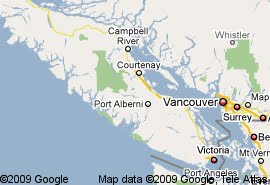By Jezzamine Andaquig on October 10, 2017
1. Always get the name of the dog.
2. Better to get it right than get it first.
3. Trust is our most important asset.
4. Endure the awkward silences in interviews.
5. Avoid clichés.
6. Pick up the damn phone.
7. And get out of the damn office.
8. Only quote when paraphrasing doesn’t do a better job.
9. With multimedia: complement, don’t repeat.
10. Know your equipment before you hit the field.
11. Give credit and thanks for user submissions.
12. Follow the money.
13. Ask open-ended questions.
14. Keep asking yourself: what is the story REALLY about?
15. Get good natural sound.
16. Experiment and take risks.
17. Capture more b-roll than you think you need.
18. When the eye and the ear compete, the eye wins.
19. Better to coach writers than fix broken stories.
20. Reports are about information; stories are about experience.
21. Arrive early, stay late.
22. Don’t let the powerful answer in the passive voice: “Mistakes were made.”
23. The best quote often comes after the reporter closes the notebook.
24. Journalism is a discipline of verification, not assertion.
25. Good writing is not magic, it’s a process.
26. Great journalism comes at the intersection of craft and opportunity.
27. Take responsibility for what readers know and understand.
28. Each reader brings an autobiography with them to a story.
29. In a nut graph, it’s not the graph that’s important, but the nut.
30. Place the emphatic word in a sentence at the end.
31. The antidote to procrastination is rehearsal.
32. Show AND tell.
33. Get a good quote high in the story.
34. Express your most important idea in the shortest sentence.
35. The most powerful form of punctuation is white space.
36. Write early to learn what you still need to learn.
37. Tell the audience what you know—and how you know it.
38. Don’t just interview the boss, talk to the mechanic.
39. To find stories, take a different route home.
40. If your mother says she loves you, check it out.
Source: https://www.poynter.org/40-time-tested-tips-journalists-never-go-out-style
1. Always get the name of the dog.
2. Better to get it right than get it first.
3. Trust is our most important asset.
4. Endure the awkward silences in interviews.
5. Avoid clichés.
6. Pick up the damn phone.
7. And get out of the damn office.
8. Only quote when paraphrasing doesn’t do a better job.
9. With multimedia: complement, don’t repeat.
10. Know your equipment before you hit the field.
11. Give credit and thanks for user submissions.
12. Follow the money.
13. Ask open-ended questions.
14. Keep asking yourself: what is the story REALLY about?
15. Get good natural sound.
16. Experiment and take risks.
17. Capture more b-roll than you think you need.
18. When the eye and the ear compete, the eye wins.
19. Better to coach writers than fix broken stories.
20. Reports are about information; stories are about experience.
21. Arrive early, stay late.
22. Don’t let the powerful answer in the passive voice: “Mistakes were made.”
23. The best quote often comes after the reporter closes the notebook.
24. Journalism is a discipline of verification, not assertion.
25. Good writing is not magic, it’s a process.
26. Great journalism comes at the intersection of craft and opportunity.
27. Take responsibility for what readers know and understand.
28. Each reader brings an autobiography with them to a story.
29. In a nut graph, it’s not the graph that’s important, but the nut.
30. Place the emphatic word in a sentence at the end.
31. The antidote to procrastination is rehearsal.
32. Show AND tell.
33. Get a good quote high in the story.
34. Express your most important idea in the shortest sentence.
35. The most powerful form of punctuation is white space.
36. Write early to learn what you still need to learn.
37. Tell the audience what you know—and how you know it.
38. Don’t just interview the boss, talk to the mechanic.
39. To find stories, take a different route home.
40. If your mother says she loves you, check it out.
Source: https://www.poynter.org/40-time-tested-tips-journalists-never-go-out-style

No comments:
Post a Comment